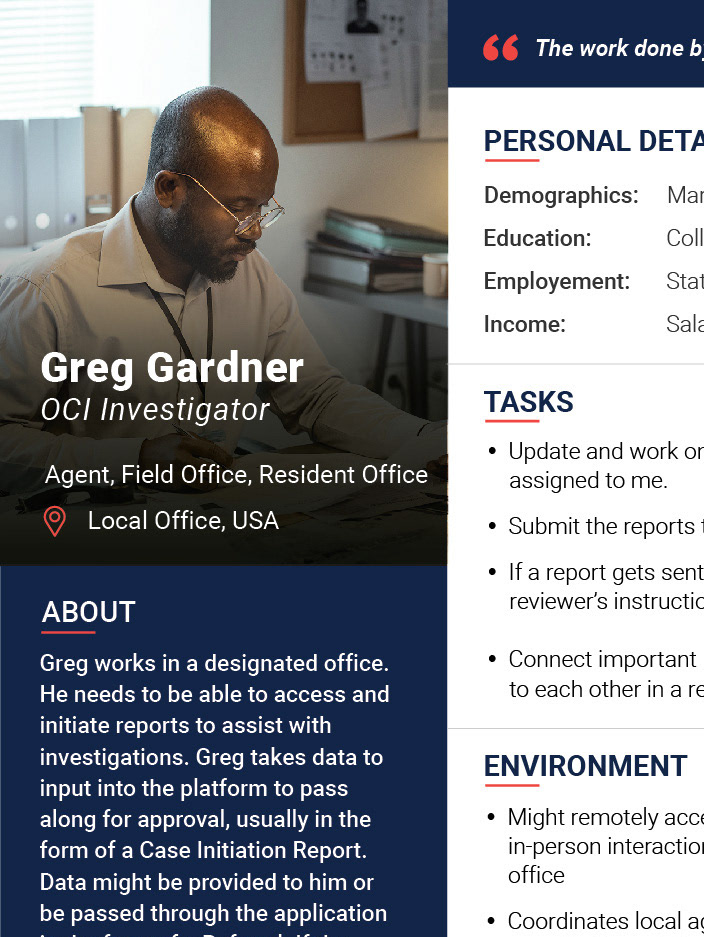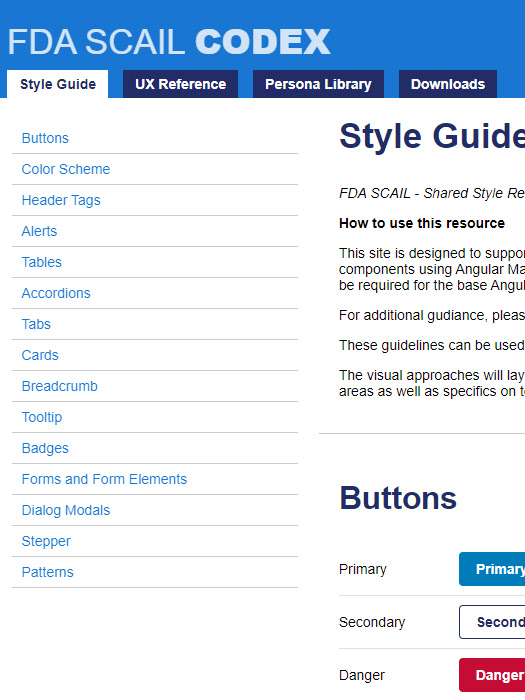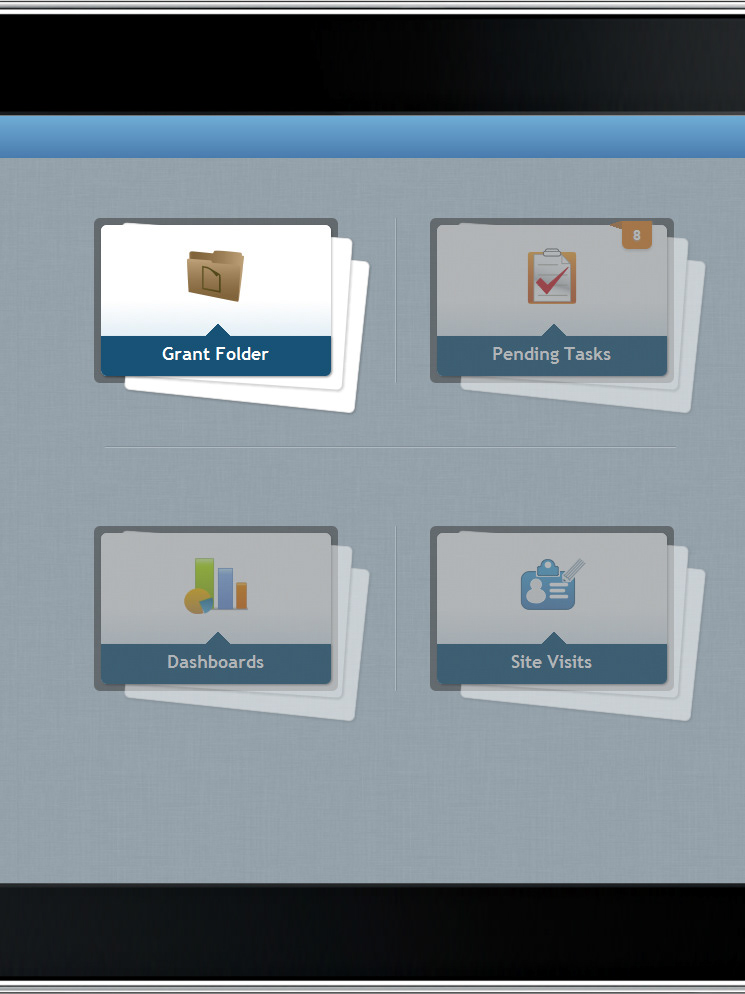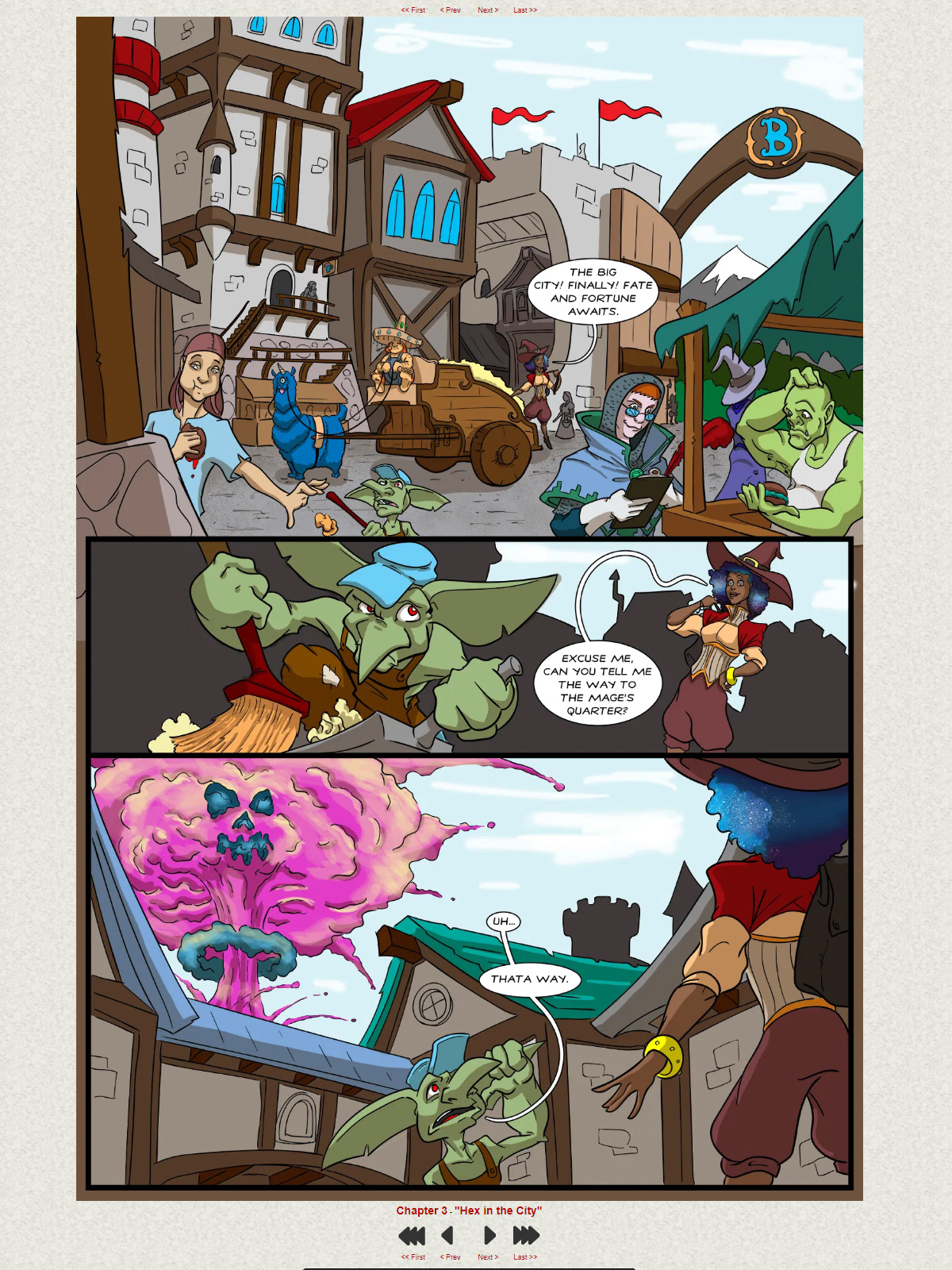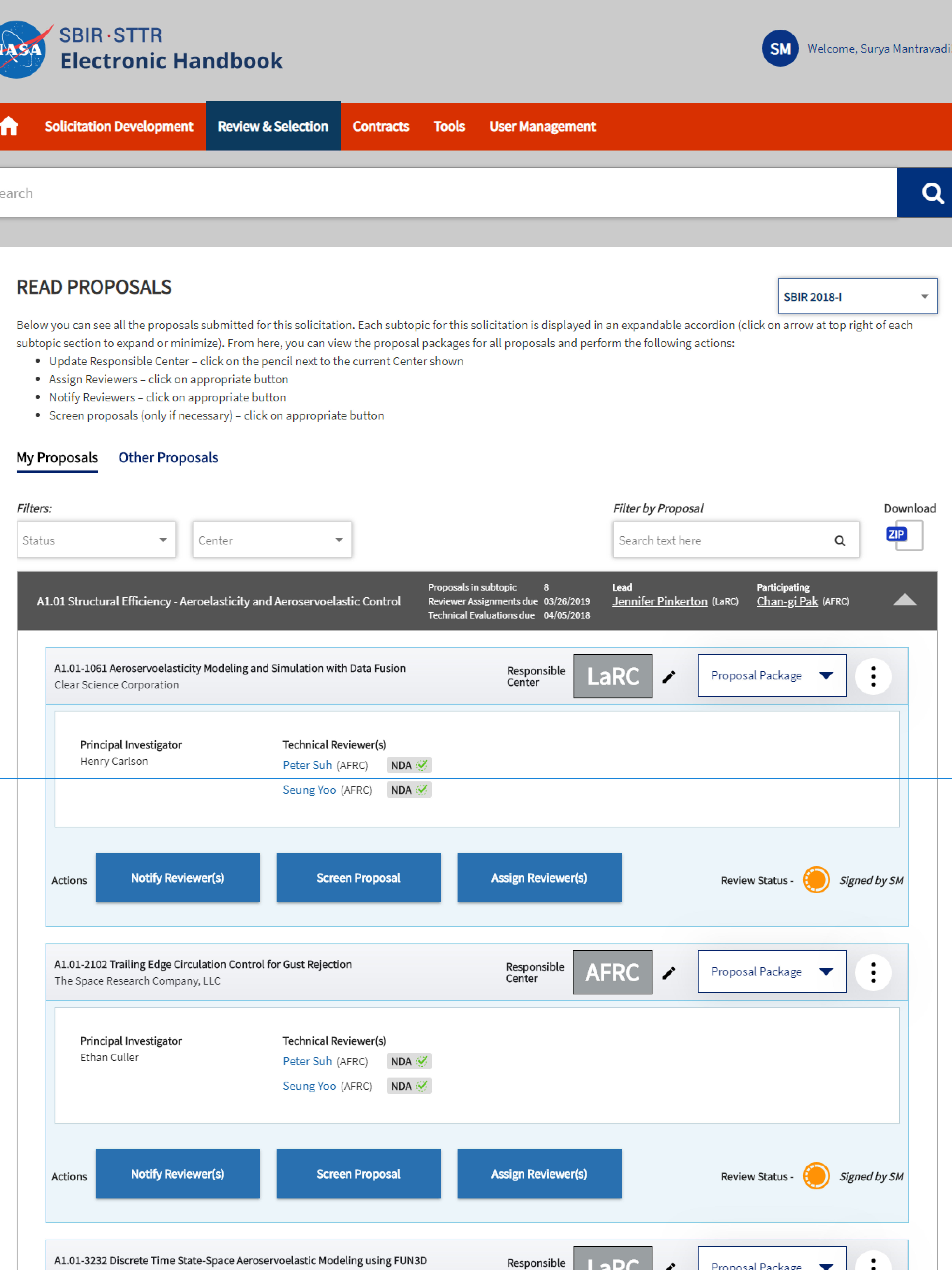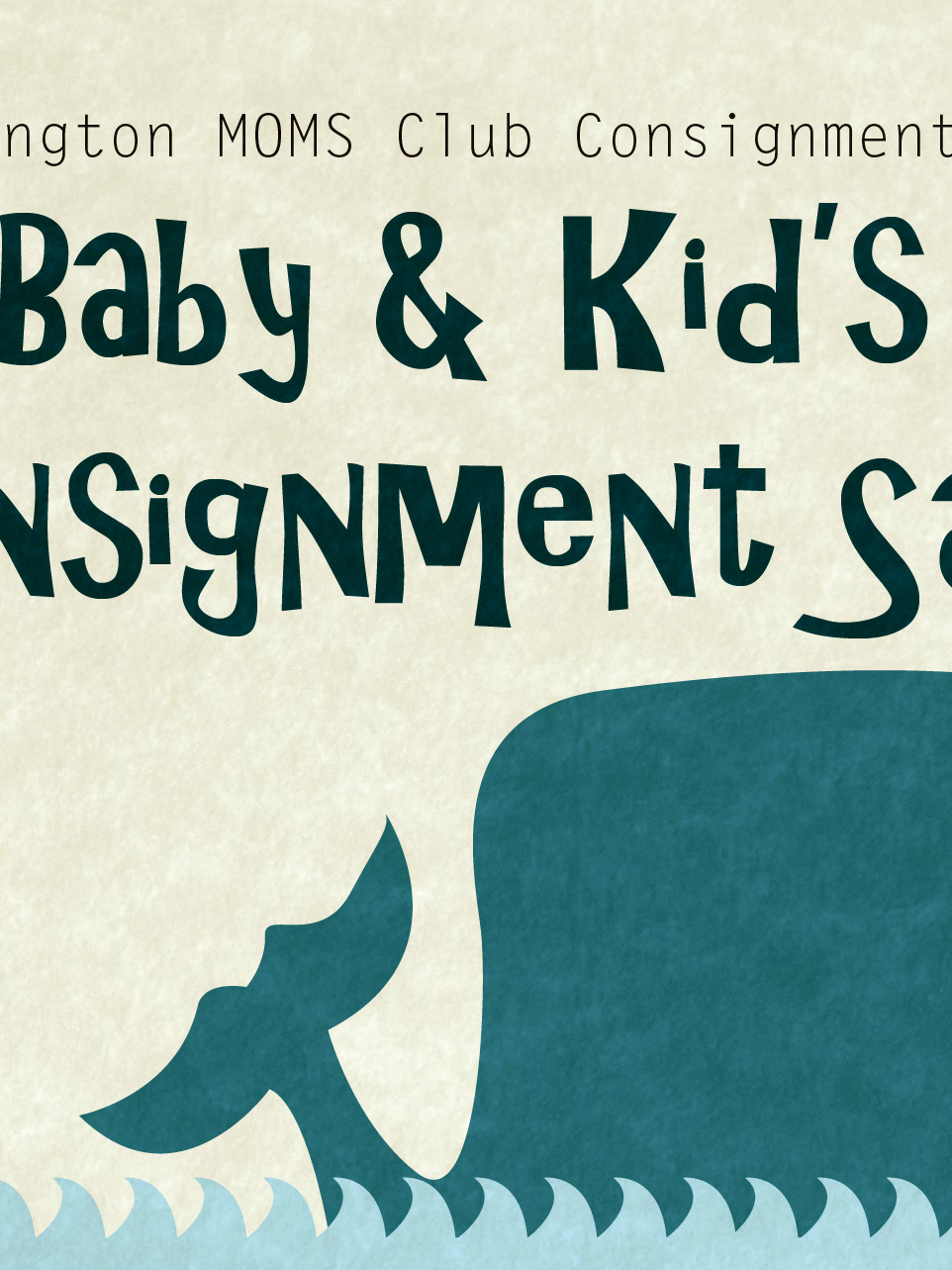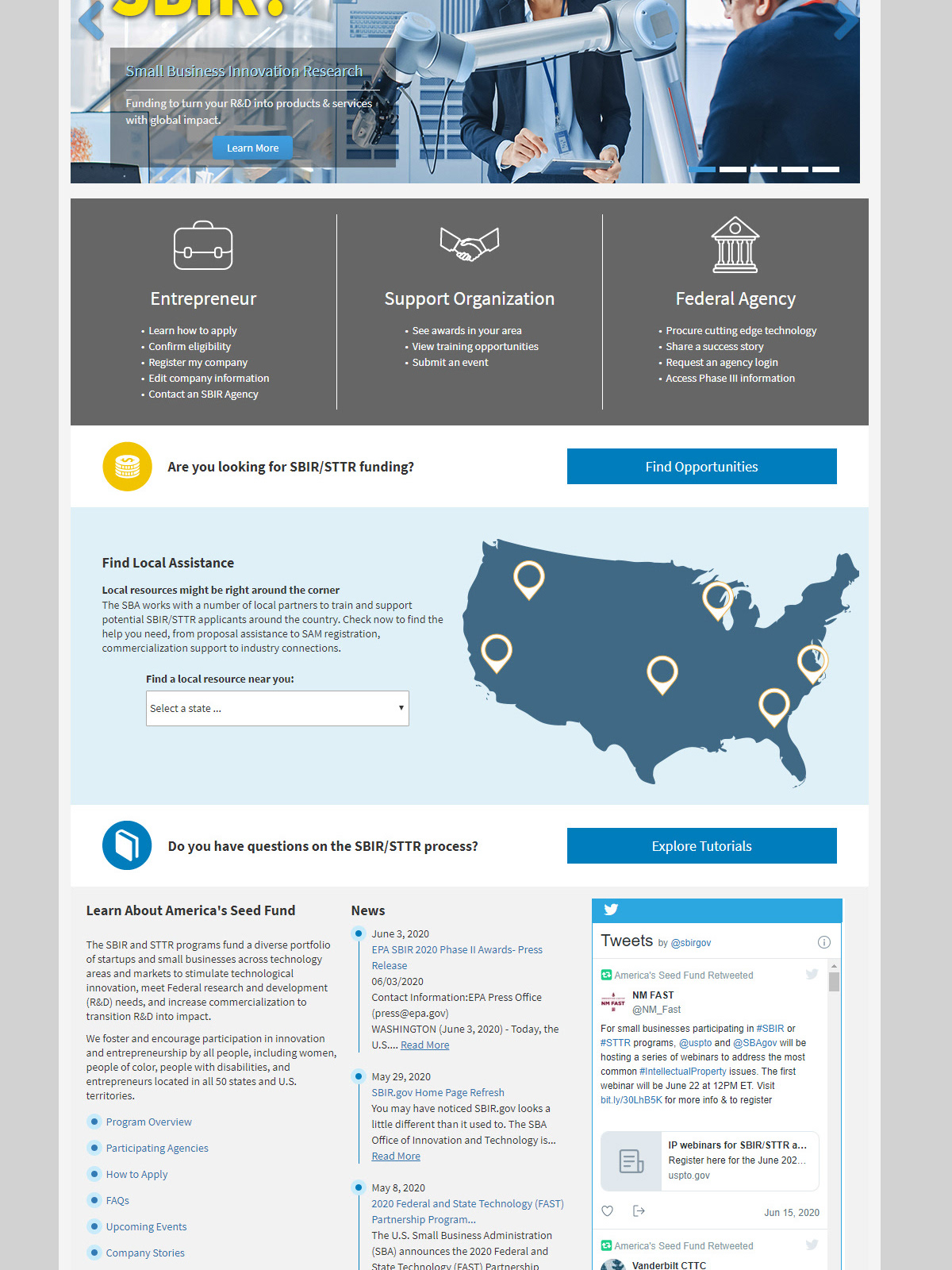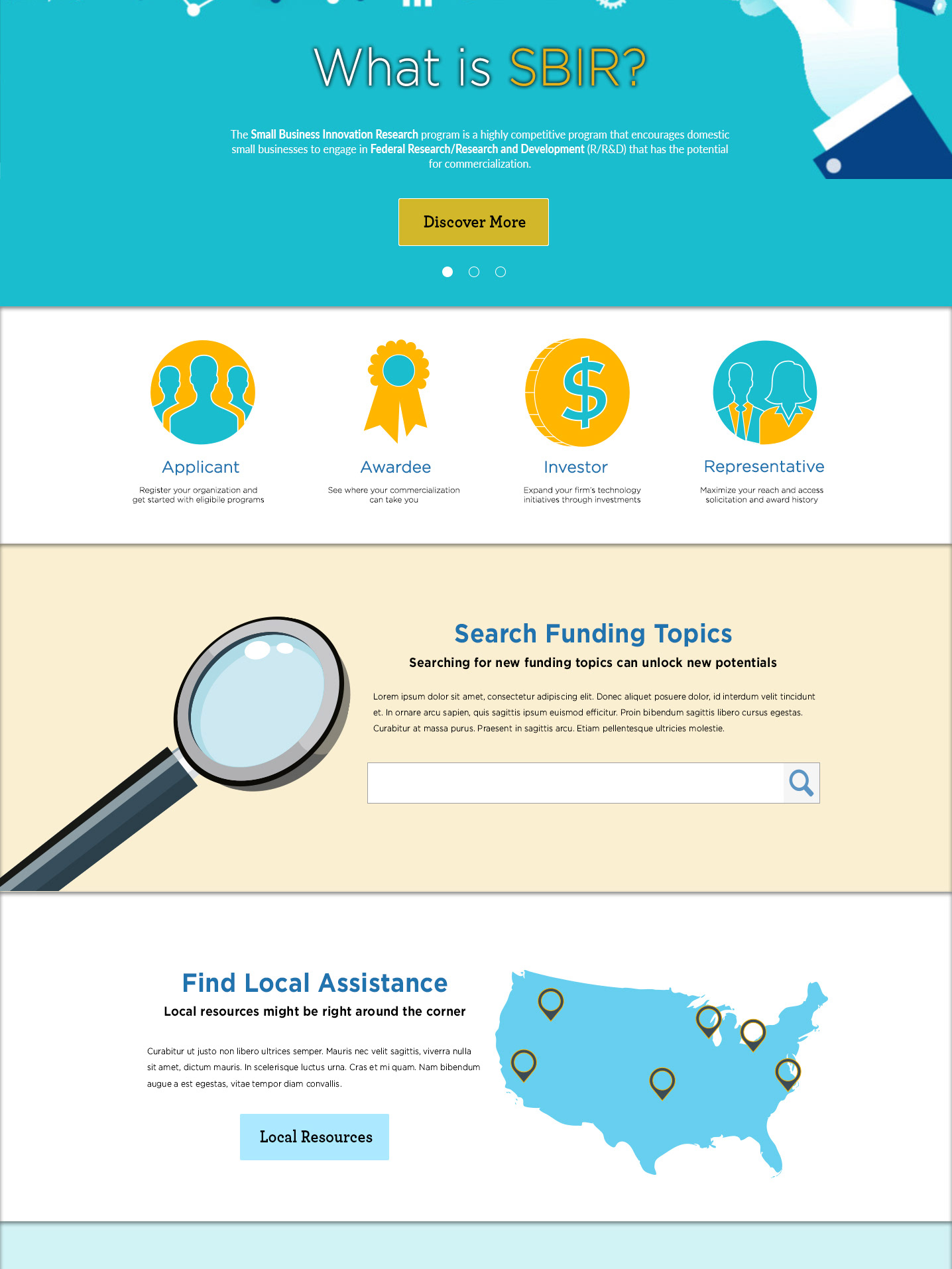The REI CX Playbook was a collaborative effort with the UI/UX resources across REI Systems. The playbook was originally conceived as a way to formalize our design practice with a standard approach. This expanded to further cover Customer Experience with additional content. Best practices and definitions of core concepts were added to help our customers understand how REI defines CX.
As I key writer, I was able to lend my expertise and experience to the effort. I aided in the structure of the plays, writer for Play 3, Play 5, and the introduction as well as being one of the editors.
The Playbook is broken down into five distinct plays:
Play #1: Identify and Understand Your Customer
The word "customer" means different things to different people. Taking time to truly define who your customers are and what they need is an important first step.
Play #1: Identify and Understand Your Customer
The word "customer" means different things to different people. Taking time to truly define who your customers are and what they need is an important first step.
Play #2: Build A Strategy
Putting the customer at the core of your strategy leads to a positive experience for both employees and customers, builds trust in your brand, and results in long lasting relationships.
Putting the customer at the core of your strategy leads to a positive experience for both employees and customers, builds trust in your brand, and results in long lasting relationships.
Play #3: Design the User Experience
User experience is any interaction a user has with a product, application, system, or service, as well as the feelings users face while journeying towards their end-goal.
User experience is any interaction a user has with a product, application, system, or service, as well as the feelings users face while journeying towards their end-goal.
Play #4: Test Before Launch
Testing during iterative phases is critical to ensuring that you are developing a solution to users' needs. Validation with customers will confirm that you are on the right track, and allow you to pivot and adjust.
Testing during iterative phases is critical to ensuring that you are developing a solution to users' needs. Validation with customers will confirm that you are on the right track, and allow you to pivot and adjust.
Play #5: Continuously Evaluate and Improve
Two conditions will always hold true: Users' needs evolve over time, and there's always room for improvement. Once your product is launched, the work isn't over. Consistently evaluating your product's performance relative to users' needs not only will help you keep the user in focus, but also will help you identify early when improvements need to be implemented.
Two conditions will always hold true: Users' needs evolve over time, and there's always room for improvement. Once your product is launched, the work isn't over. Consistently evaluating your product's performance relative to users' needs not only will help you keep the user in focus, but also will help you identify early when improvements need to be implemented.

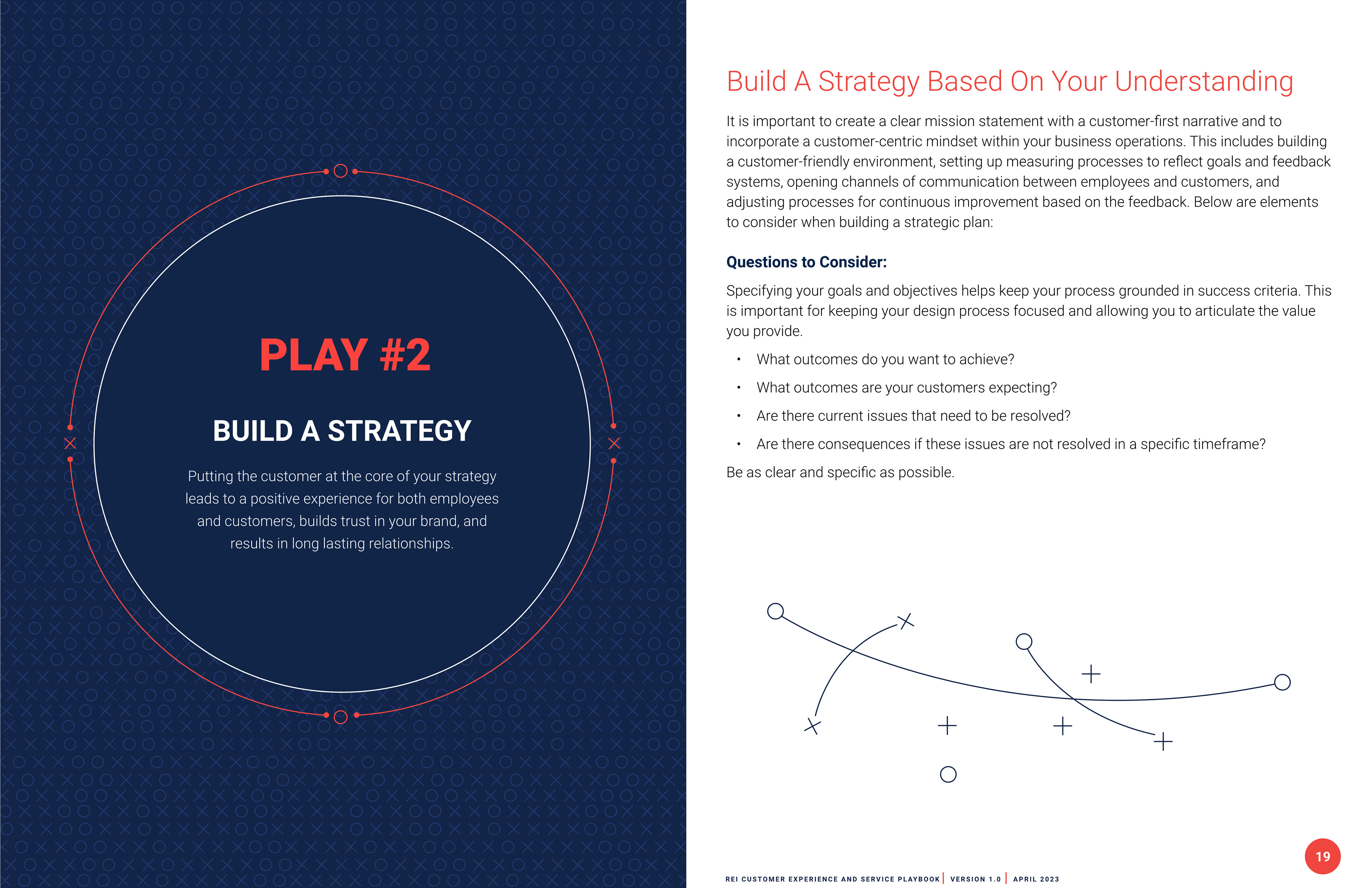
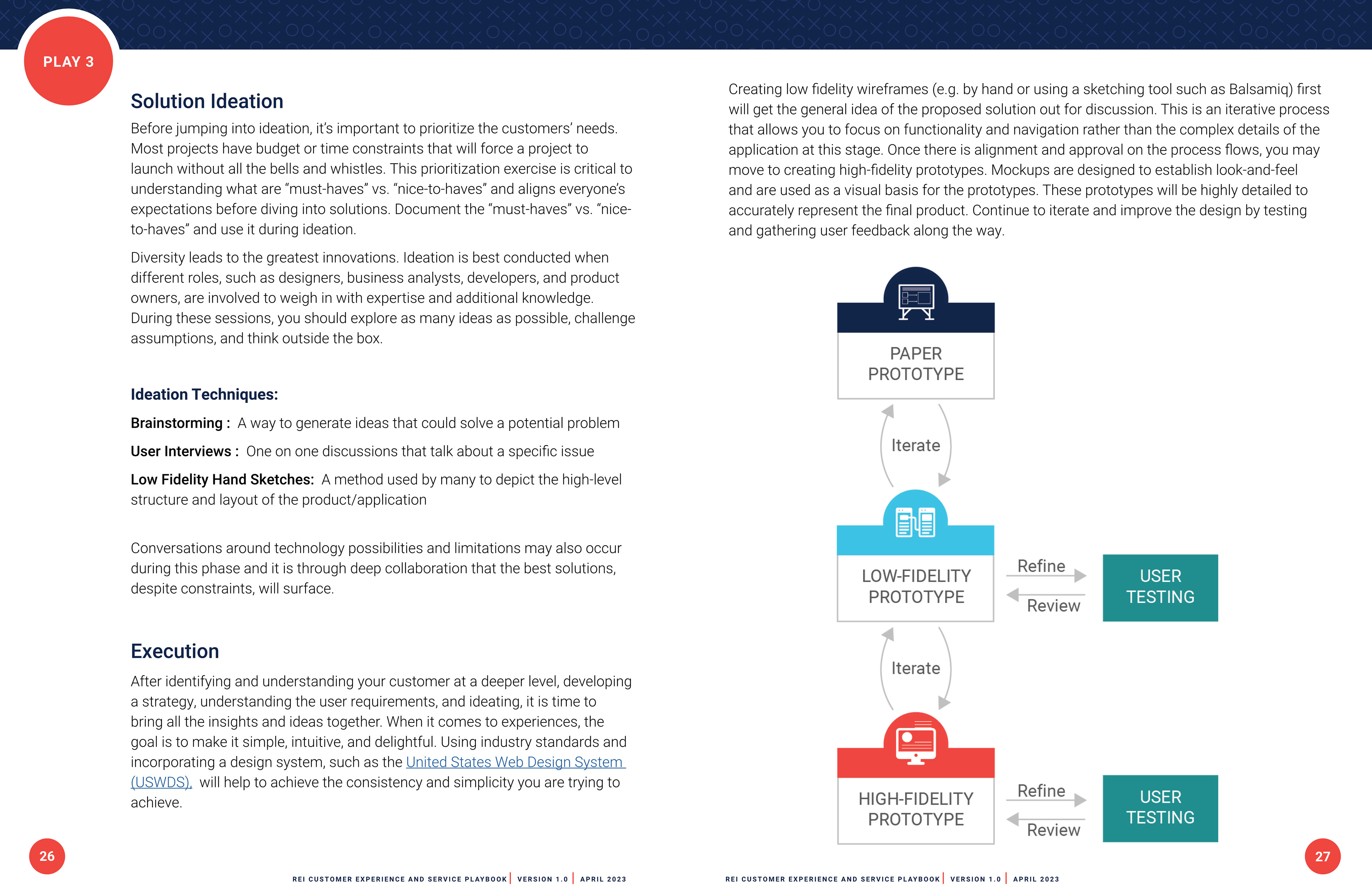
Each play is expanded upon in detail with definitions, rationale, and practices to conduct during each play. This material has been sourced from industry best practices, federal guidelines, and institutional knowledge from the UI/UX resources' experience.
The CX Playbook has been a useful resource for discussions with our customers. It has also been fantastic guide for internal training and evangelizing CX virtues across teams. In 2024, the Playbook won a Clear Mark Award in the Longer Brochure category.
The full CX Playbook is publicly available on the REI Systems Customer Experience site.

